When you access the AMPLIFY platform, have you ever wondered why there are multiple organizations? Why you have access to certain capabilities in one organization and not in another? Why sometimes you see different options in AMPLIFY Central or the top navigation bar?
If you have these or similar questions, then this blog can help you. It is written specifically to help you get a better understanding of one of the fundamental concepts of the platform, namely Organization and User management (OUM). Of course, there is more to OUM than what you will read here, but this five-minute read should help you get a high-level understanding of OUM.
What is OUM?
OUM, or Organization and User Management, is the capability of the AMPLIFY Platform to define who has access to what. It defines which capabilities an organization can use, which assets a user can consume, or what actions a user can take.
The AMPLIFY Platform
Let’s start from the beginning and look at what an organization is in the AMPLIFY Platform. The AMPLIFY Platform consists out of multiple environments. This blog focuses on one environment, the production environment, or the Axway Platform. The same concepts apply to other environments as well.
Each environment contains one or more organizations. An organization can be seen as a single instance of the platform. An organization is uniquely identified by an Organization Identifier (Org ID). As a best practice, an organization is a company, such as Axway, and the team’s concept (see below) is used to have a clear separation of assets between working groups such as departments, projects, and individual users.
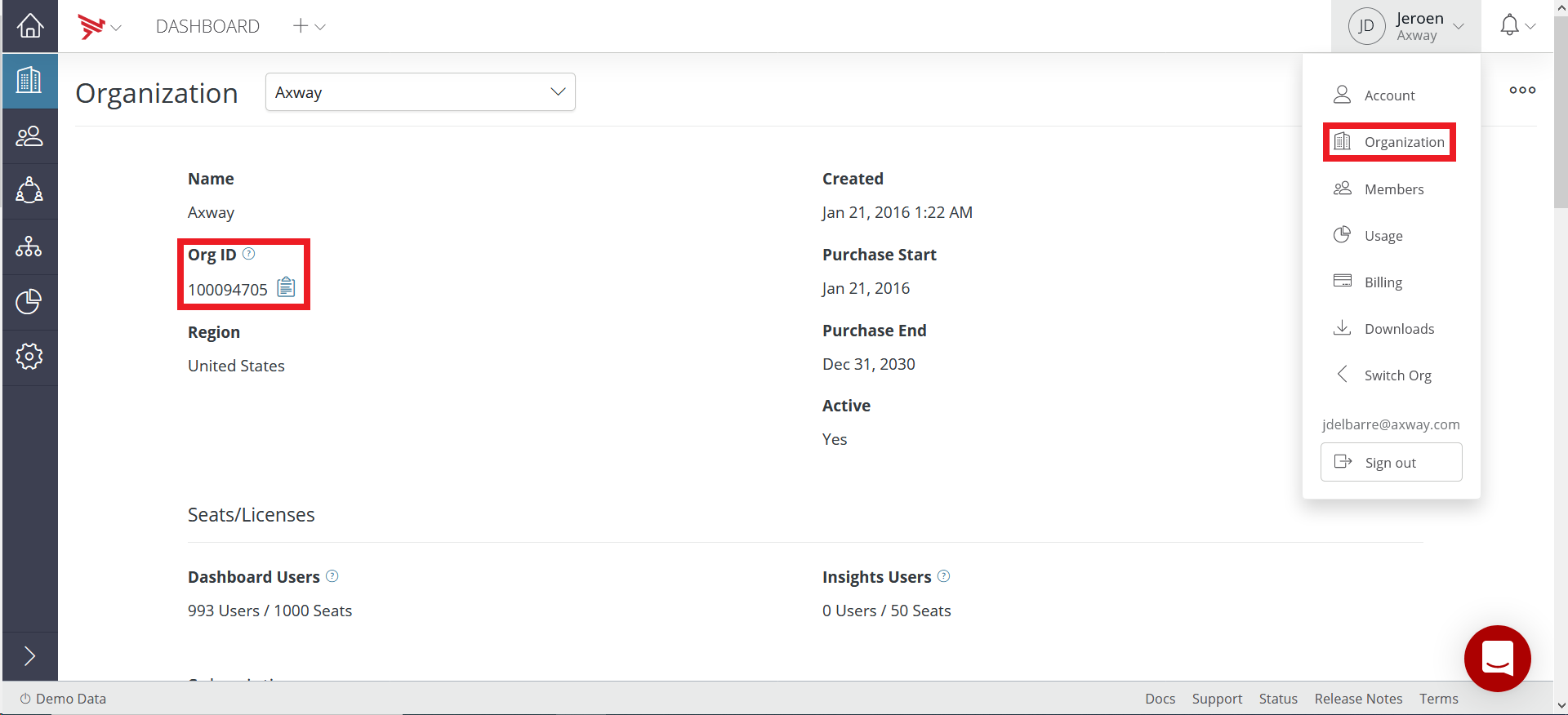
Organization – Org ID
An organization is linked to one or more subscriptions. Subscriptions define the platform capabilities that the organization is allowed to use. For example, the organization Axway has, amongst others, an Enterprise subscription to Application Integration and a Trial Subscription to Flow Manager.
When you sign up for a trial of the platform, then an organization is automatically created for you and you become the administrator who manages the organization. When a customer purchases our platform capabilities, then an Axway administrator creates an organization, assigns the correct subscriptions, and makes a user of the customer an administrator of the platform.
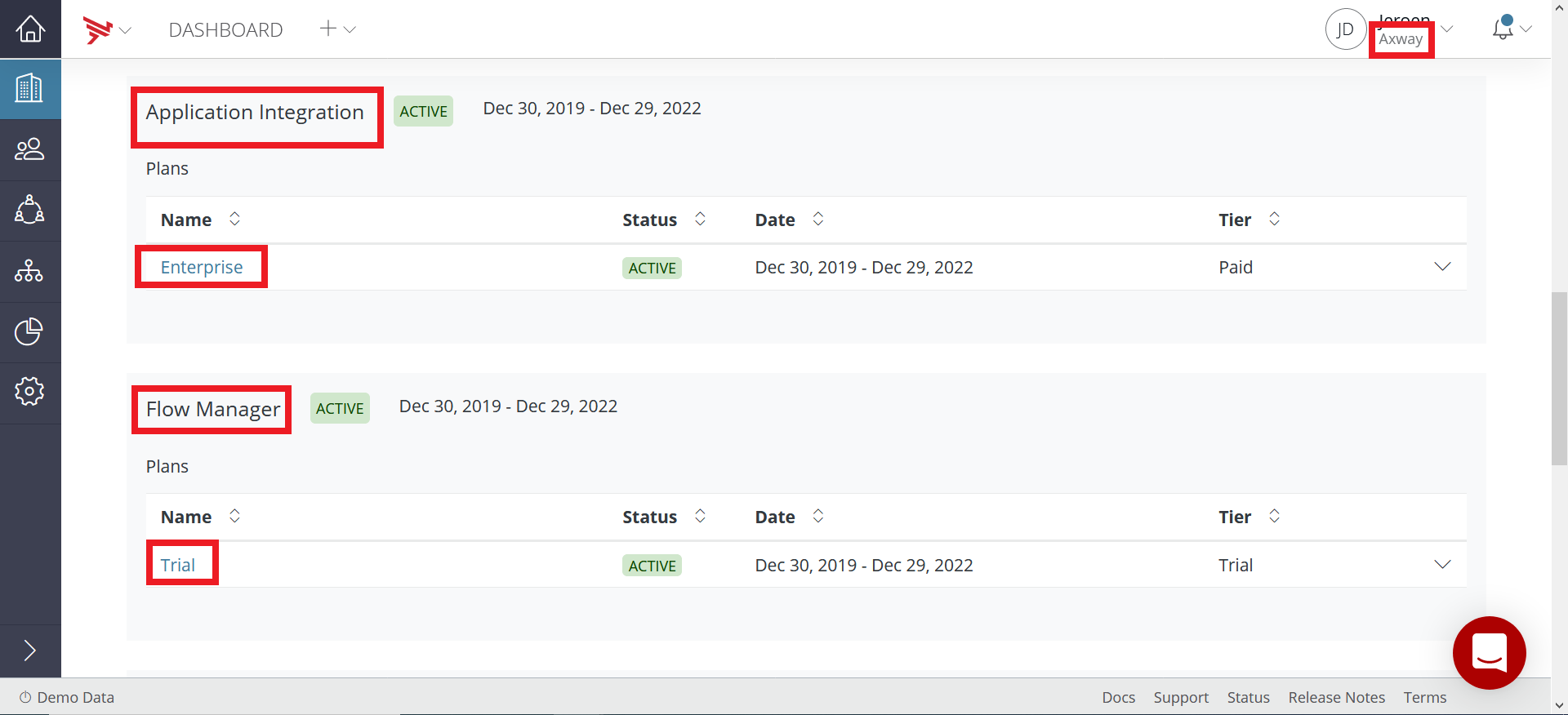
Organization – Subscriptions
A user (referred to as a member of the platform) can belong to multiple organizations. The screenshot below shows where you can see which organizations you belong to and how you can switch to a different organization.
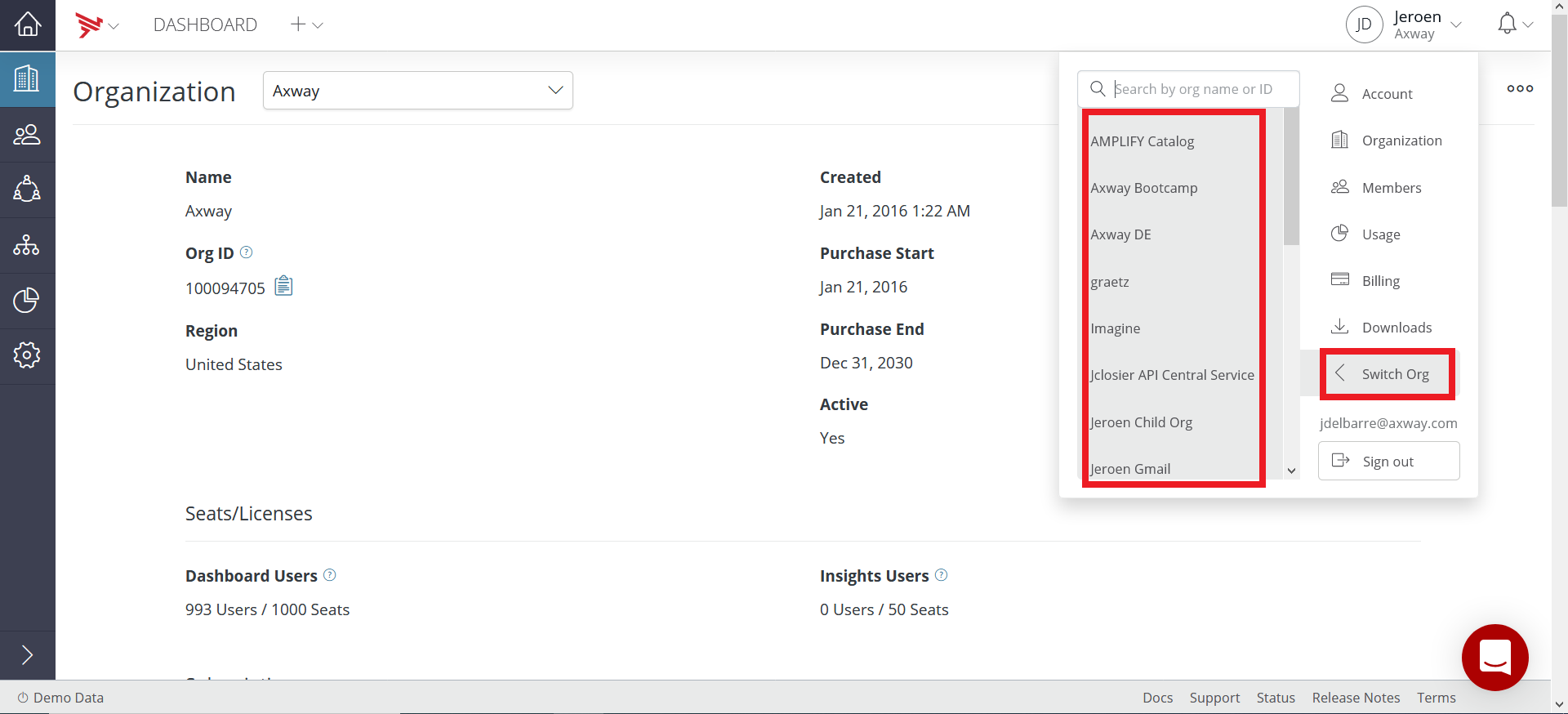
Organization – Switch Org
Each organization has one or more members. At least one member needs to be an administrator. If a new organization is created, then the first member becomes an Administrator. It is possible to change the roles of the members, but there always needs to be at least one member that has the Administrator role.
The Axway organization currently contains 1,012 members. You probably wonder, we are more than 1012 Griffins, so why are there not a lot more members? Well, an employee of Axway is automatically added as a member to the Axway organization with the role developer when she/he logs in for the first time to the platform. At this point, 1,012 Griffins have logged in at least once to the platform.
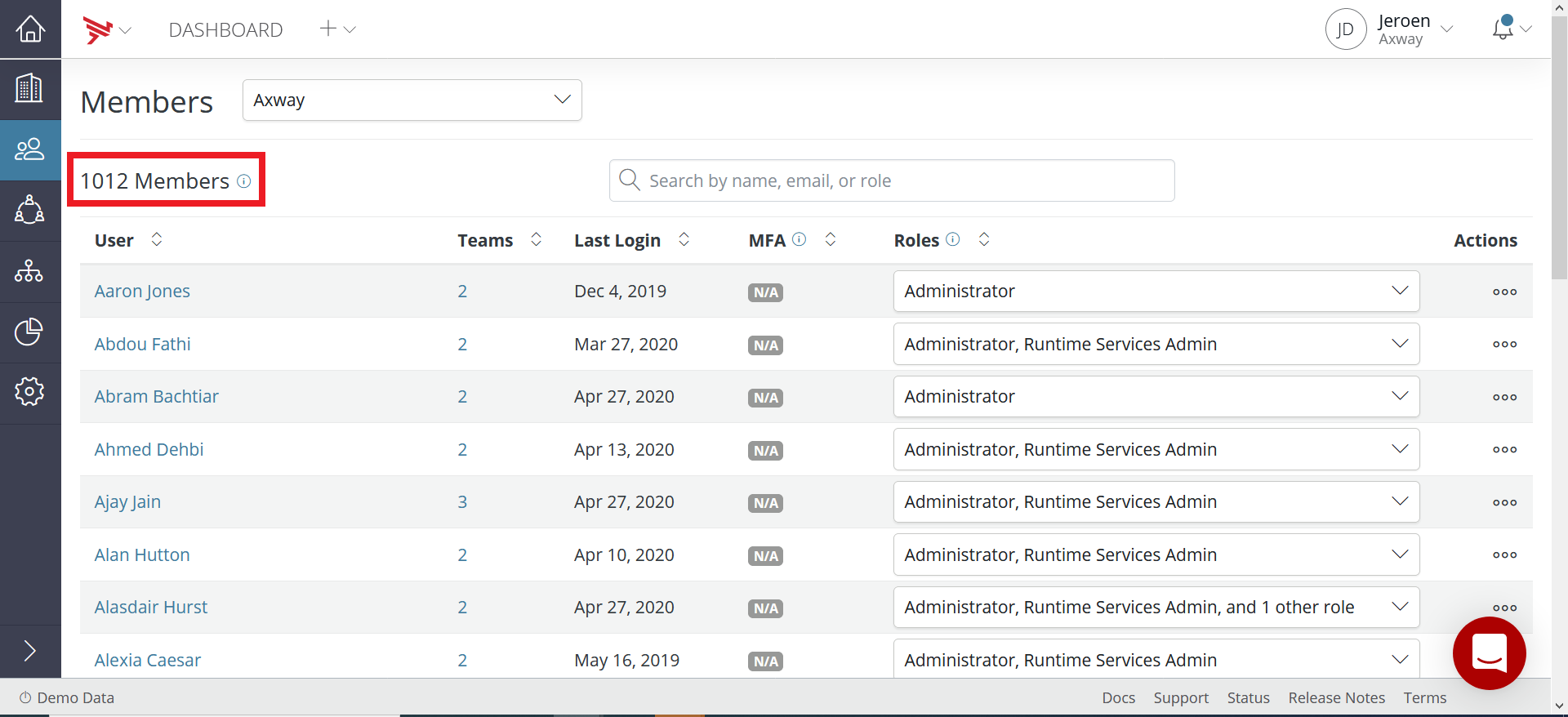
Members – Axway currently has 1,012 members
We can distinguish 3 types of roles in the AMPLIFY Platform:
- Platform Roles – a role that applies to all the capabilities of the platform and is mutually exclusive. You can only have one platform role, such as an Administrator. This role can be different per organization that you are a member of.
- Service Roles – are specific to a capability such as AMPLIFY Central or Flow Manager. These roles are not mutually exclusive. A member can, for example, have one role in AMPLIFY Central and 3 roles in Flow Manager for a specific organization.
- Team Roles – these roles define what a user is allowed to do with the assets of a team, more on teams later in this blog. Part of the team roles are mutually exclusive and part of them are not. The roles can be seen in the account screen.

Roles – This user belongs to 19 organizations and has specific roles per organization
Users can belong to one or more teams or not belong to any teams at all. A team is a logical grouping of users and assets. The idea is to enable our customers to create teams so that certain groups of people can work together and use the same assets. A team belongs to one organization and the members of a team also need to be a member of that organization. The same user can belong to multiple teams and can also have a different role in each team. Each organization always has a default team.

Teams – Teams part of the Axway organization
When creating items such as API Proxies in AMPLIFY Central or Unified Catalog Assets one team always needs to be chosen as an owner. Only members of the owning team can make changes or remove the items.
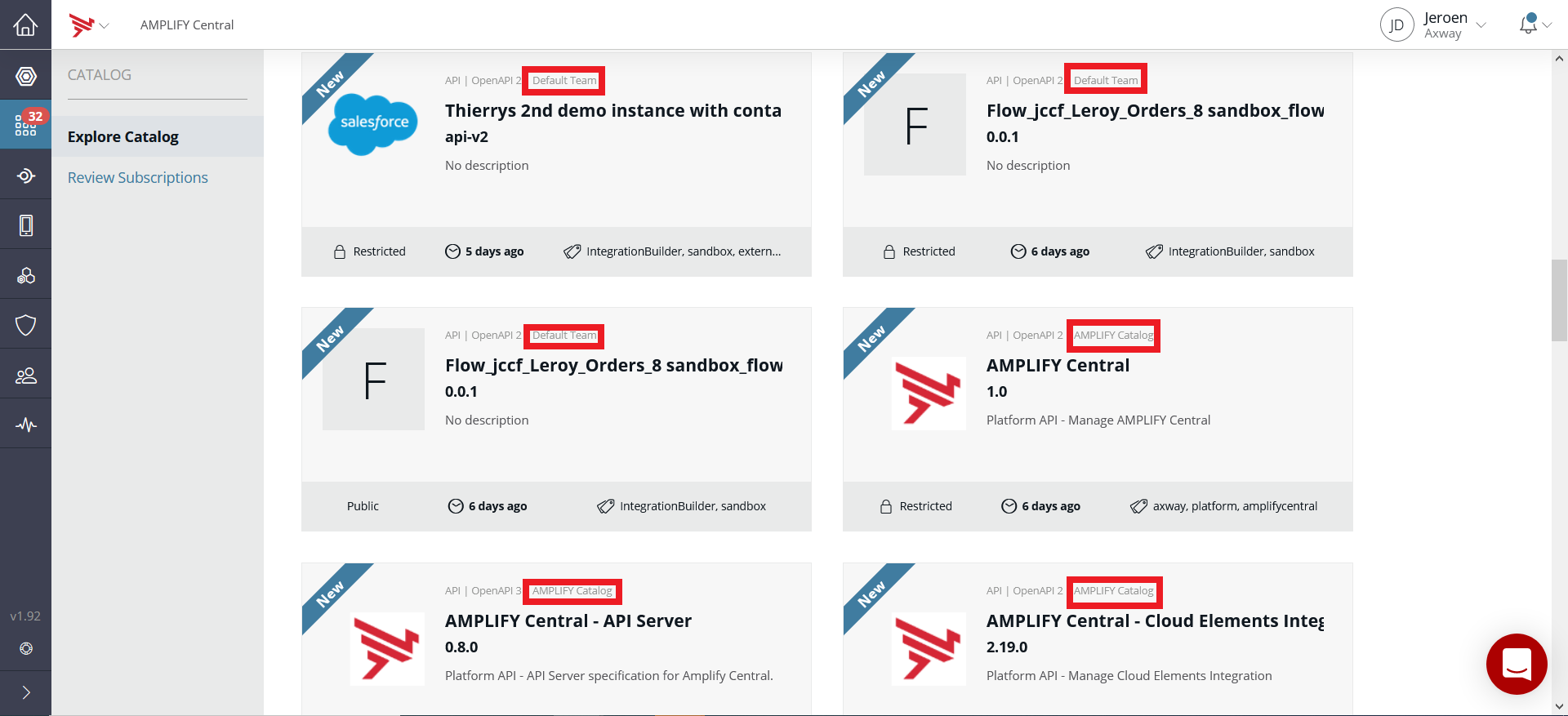
Teams – Owning a team of Unified Catalog Items
Unified Catalog items can be shared with other teams. The other teams can then discover and consume those items, but they cannot make changes to them.

Teams – Share Unified Catalog Item
To conclude the blog, the diagram below provides an overview of the different entities that were described in this blog and how they relate. The diagram does not contain all details of OUM but gives an example of a user John and the relations he has with the different entities.
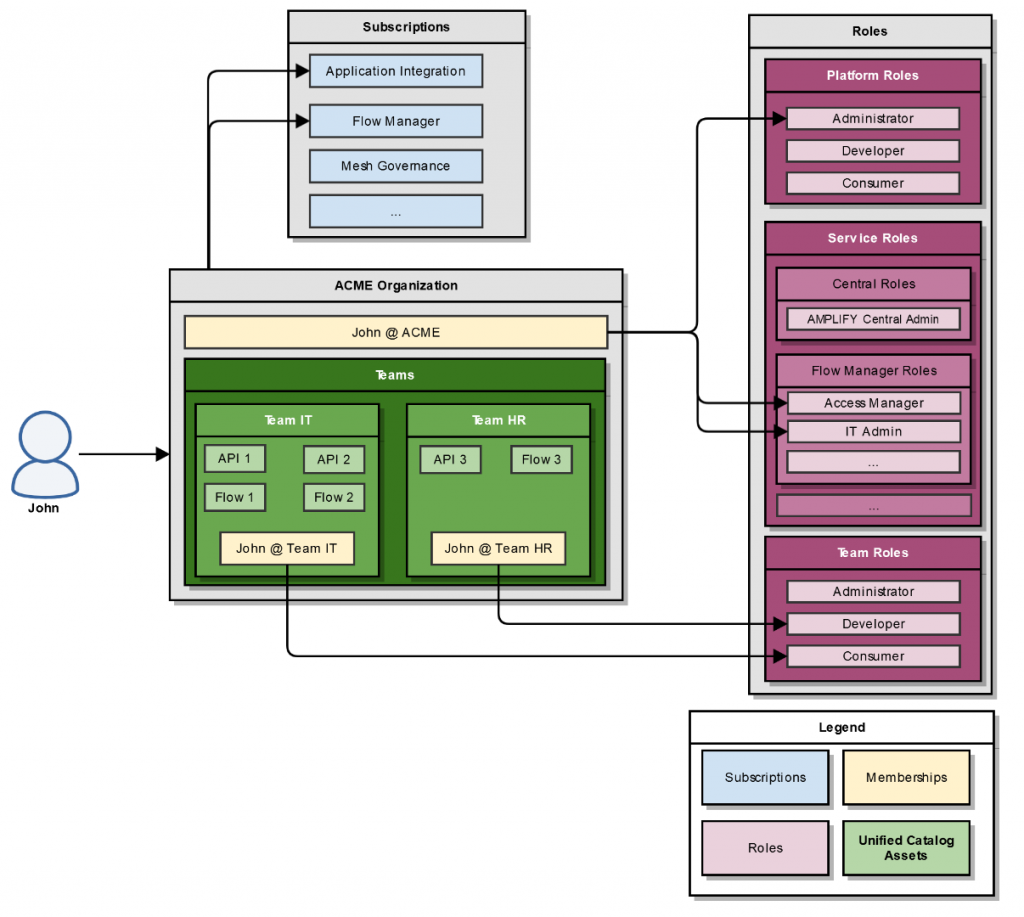
OUM Diagram – User-Centric View
John is an employee of ACME and is a member, John @ ACME, of the ACME organization in the AMPLIFY Platform. The ACME organization has a subscription to Application Integration and Flow Manager. John is an Administrator of the ACME Organization and is also an Access Manager and IT Admin in Flow Manager. John is a member of Team IT and Team HR represented by his memberships, John @ Team IT and John @ Team HR. He is a Developer on Team HR and a Consumer on Team IT. An example of the difference between these roles is that he is able to create API Proxies on Team HR and not on Team IT.
Hopefully, this blog gave you some extra insights into organizations, members, roles, and teams!
Learn about Axway’s data integration and engagement platform built to power CX networks:

Follow us on social